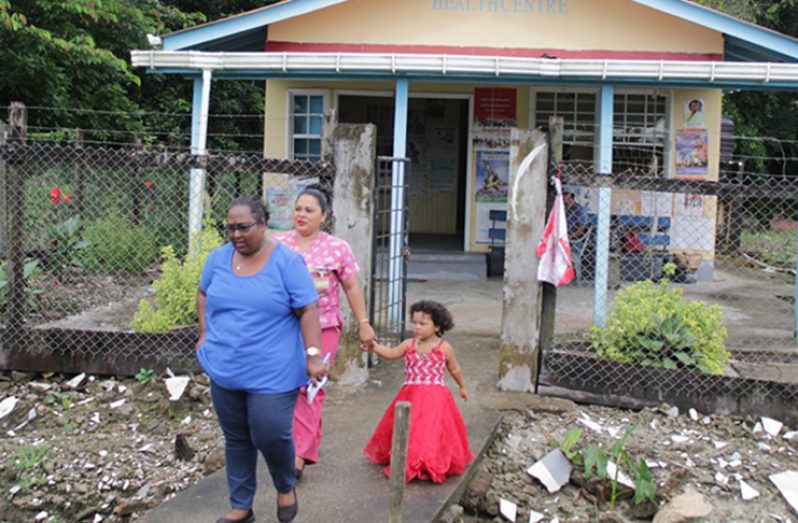It was once known as Flag Island because of the huge flag mounted on the island to serve as a guide for Dutch ships traversing the lengthy and mighty Essequibo River. Later, the name was changed to Fort Island- perhaps because it houses Fort Zeelandia, the ‘youngest’ Dutch fort in Guyana.
Centuries ago, the fort was constructed closer to the mouth of the Essequibo River because the location gave the Dutch West India Company a more strategic vantage point than the other fort used by the Dutch: Fort Kyk-Over-Al, located at the confluence of the Cuyuni and Mazaruni rivers.

The island, three square miles in length and a mile in width, houses the Court of Policy too. This court was not only a Court House during the 17th century but a church and venture office as well. Really, Fort Island was a hub of some sorts as Essequibo transformed from a mere trading post to a Dutch colony. It is only imaginable that the island must have been busy with people during those times. And let’s not forget another characteristic of a Fort (and evidenced by the cannons present to this day), it was a place of warfare.
Nowadays, a resident of the island, Carla Mittleholzer related: “Life on the island is very quiet and peaceful.”
As the colony of Essequibo grew, and ownership changed from Dutch to the British, larger areas developed to advance the interests of the colonial rulers and the places like Fort Island were left neglected.
Farming and fishing became the main economic activity of the island, and due to its strategic location, islands further up the Essequibo came to trade produce. But the population dwindled.
And as time progressed and Guyana gained independence and continued to develop, Carla related that the already depleted population further dwindled because persons left the island in search of educational and occupational opportunities.
Carla, who is 54 years old, was born on the island and lived there all her life. She has seen the population move from about 200 to less than 100 for these reasons. But she was one that did not leave, for the simple fact that the island became a tourist attraction.

“The only time we see lots of people here is when tourists come because there aren’t too many people living on the island now,” Carla told this newspaper.
On holidays and even on Saturdays and Sundays, there would be about “five jetboats” of tourists coming to the island, according to the woman. Each boat carries about 30 persons.
And during the peak tourism season- June to August- as many as 300 persons could visit the island some weekends and sometimes, even as many as 500 persons would visit the island for the week, she shared.
Tourists primarily visit the island for the requiems of the Dutch culture. In fact, the Court of Policy has been made into a Dutch Heritage Museum by the Guyana National Trust.
“I worked with the [Guyana] National Trust for 13 years now,” she highlighted and related that because she has a job on the island that she enjoys, she never opted to leave the island.
She is a guide on the island, and with her knowledge of the island and particularly of the Court of Policy, she is able to edify visitors.
Reminiscent of the olden days, Carla and her now-late husband also created a trading business on the island where they would ‘buy and sell’ goods for persons heading into Guyana’s interior locations.
Known as a local tourist destination now, there is still a semblance of a community living on the island. Perhaps, this adds to the appeal of the island because you get the Dutch culture juxtaposed with community life.
On the island, there is a health centre that serves other islands on the Essequibo River, as well as a nursery and primary school. Pretty Debideen resides on the island with her family and she is the local nurse but also works indirectly with the tourism activities on the island.
There is a dilapidated bird trail on the island, just before the Fort, where there are supposed to be scores of tropical birds that would amaze any person from your average tourist to expert birdwatcher.
By next year though, Pretty hopes that she and her family can develop this trail so that it can add to the aesthetic and overall appeal of the island so that many more tourists would visit.
Andy Kam is the manager of Old Fort Tours, a tour company that does tours almost exclusively on the Essequibo River. On the island, he chatted with Carla and Pretty as though they are old friends (and maybe, they are). He affirmed that maintaining a good relationship with the residents is paramount to offering a good tourist experience.
He explained that tourism must be engaged in a sustainable way so as to preserve the product (the island) and the people inhabiting it. Resultantly, the tour company has thought that it would be better to have the locals be tour guides, but this avenue did not work out as planned.
The company began training its own guides who would conduct the tours on the islands, and who could also function as guides on the islands visited subsequent to Fort Island.
Nevertheless, Fort Island is home to a small and close-knit community. And in some way or the other, tourism has become an economic activity for each person on the island- just like farming and fishing.




.jpg)











